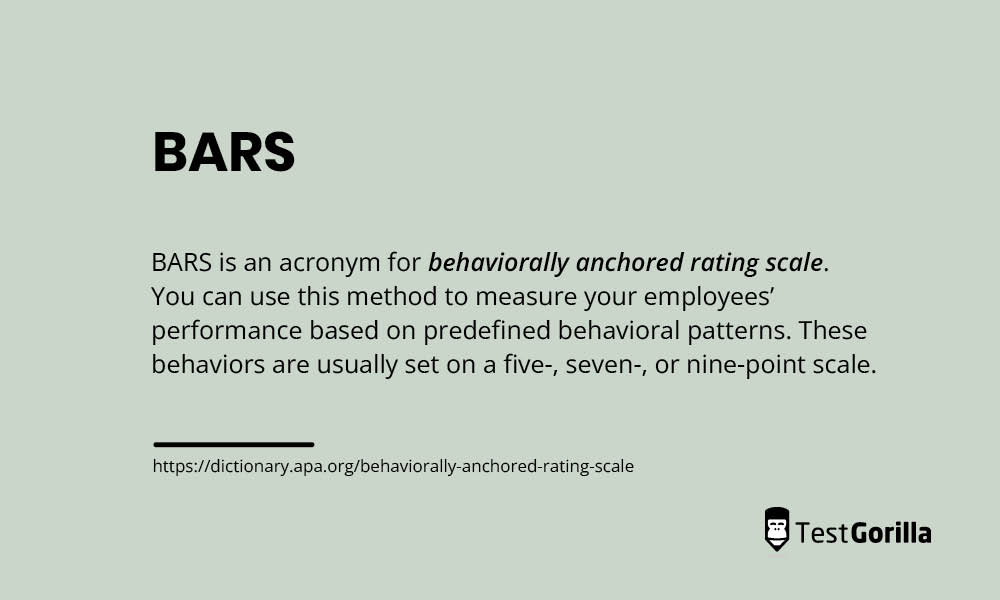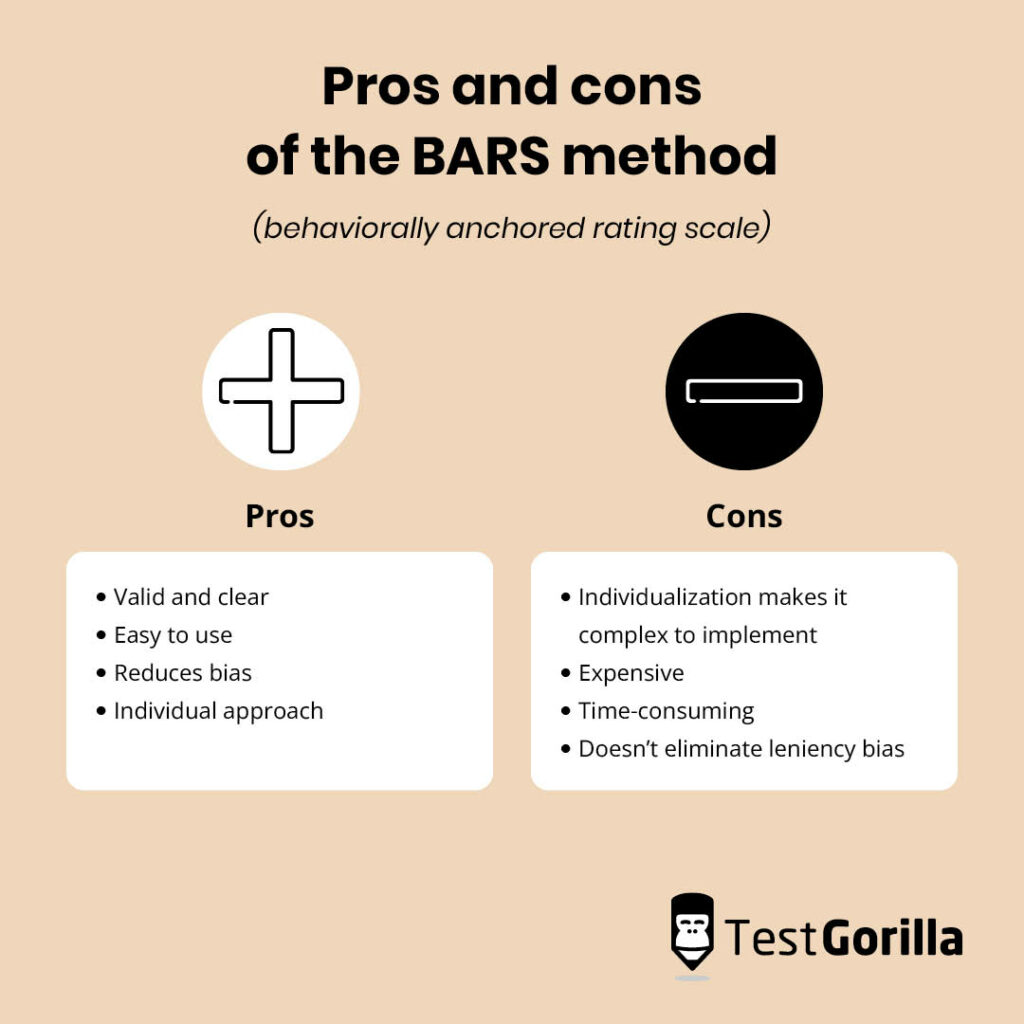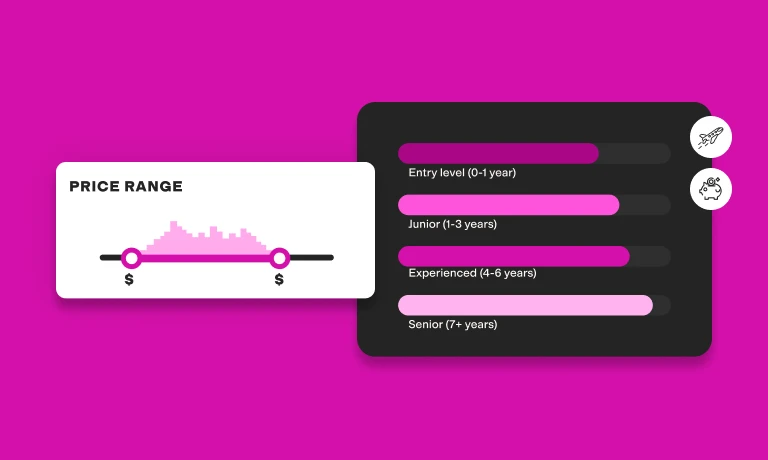How the BARS (behaviorally anchored rating scale) method can help performance management
Performance management has been a major consideration in the business world for decades. One tool that has contributed significantly to performance management in that time is the BARS method.
In this article, we will go over how this 60-year-old method can transform performance management in your organization. We’ll also give examples of the BARS method, list its pros and cons, and describe who should use it. First, let’s start by defining the method.
What is the BARS method?
BARS is an acronym for behaviorally anchored rating scale. You can use this method to measure your employees’ performance based on predefined behavioral patterns. These behaviors are usually set on a five-, seven-, or nine-point scale.
With the BARS method, you can evaluate whether your employee is likely to display specific behaviors.
Examples of the BARS method
Let’s take a look at the following common example of measuring an employee’s performance. Imagine that you are in the supermarket business and need to evaluate one of your cashiers.
You might use the following scale:
How often is your cashier helpful to your customers?
1: Never helpful
2: Almost never helpful
3: Sometimes helpful
4: Helpful most of the time
5: Always helpful
However, when it’s time to evaluate your cashier, you have a hard time distinguishing if the cashier is never helpful (1) or almost never helpful (2). What constitutes “never” and “almost never?” If the cashier was only helpful once or twice, does this mean they were “almost never” helpful? Furthermore, how do you define which actions are “helpful”?
You may have many questions when using the scale above since it lacks specificity and is completely open to your subjective interpretation. This makes it almost impossible to make an accurate and unbiased evaluation of the cashier.
Now, let’s take a look at how we could approach the same problem using the BARS method:
How often is your cashier helpful to your customers?
1: Doesn’t put the purchased items in the bags
2: Puts the purchased items in the bags for every 10th customer
3: Puts the purchased items in the bags for every fifth customer
4: Puts the purchased items in the bags for every second customer
5: Puts the purchased items in the bags for every customer
The scale above uses the BARS method, enabling you to clearly observe the behavior that’s happening (or isn’t happening).
Using the BARS method eliminates bias in your assessment by providing you with a way to define whether the employee displays a specific behavior. Scores are also clearly distinguished from each other such that you know how score 1 differs from scores 2, 3, and so on.
The best insights on HR and recruitment, delivered to your inbox.
Biweekly updates. No spam. Unsubscribe any time.
Pros and cons of the BARS method
The BARS method has several pros and cons. Here, we’ll cover the most important ones:
Pros
The following are the pros of the BARS method:
Valid and clear. The BARS method is valid and clear. Since you can measure specific behavior, you won’t have a problem understanding what you need to observe. Each score is associated with written text that explains exactly what is being measured. Since BARS measures specific behavior, the tests will be valid. (For example, if you’re measuring the number of times the cashier put the items in the bags, the test will measure that and nothing else.)
Easy to use. The BARS method doesn’t require a lot of training to implement. You can simply observe a given situation and report on the employee’s behavior.
Reduces bias. Since the BARS method measures specific behaviors, it reduces unconscious bias in the assessment. This means that the BARS method minimizes bias and subjectivity in the evaluation regardless of who the manager and employee are.
Individual approach. The BARS method assesses individual employees and job positions. This means the employee will be measured on a scale that reflects their role in the organization. If an employee is in customer service and talking over the phone with clients, then they won’t be measured by the same standards as a cashier.
Cons
The BARS method also has some cons:
Individualization makes it complex to implement. Since every job position needs to have individual measurements, it can be complex to create assessments for many different roles using the BARS method.
Expensive. You may need help from subject-matter experts and psychologists if you want to set up BARS correctly.
Time-consuming. It can take a lot of time to observe each employee individually to grade them.
Doesn’t eliminate leniency bias. Even though BARS eliminates a lot of biases, it doesn’t eliminate leniency bias (the tendency to inflate the scores of underperforming employees). This means you need to focus on every single behavior in the test to ensure that you measure it accurately.
Who should use the BARS method?
Even though the BARS method can be useful for every business, not every company is ready to implement it in its workplace.
Since it takes a lot of time and resources to use BARS in the workplace, it’s best suited for medium- and large-sized companies that can afford to invest the resources into it.
On top of that, it works best for organizations that have similar job positions across the board, like those in the customer service or delivery industries. In these cases, you won’t have to create every single assessment from scratch but can reuse some elements.
Transform your performance management with BARS
With the BARS method, you can minimize bias in your assessment. It will give you insight into how your employees are doing in the workplace and what it will take to improve their skills.
To enhance your performance management further, consider pairing up BARS with our pre-employment assessments to get the full picture when it comes to your employees’ skills.
You can find hundreds of scientifically created tests in our test library that will help you evaluate your employees accurately and without bias. Simply sign up for a free account to start assessing your workforce.
You've scrolled this far
Why not try TestGorilla for free, and see what happens when you put skills first.




















